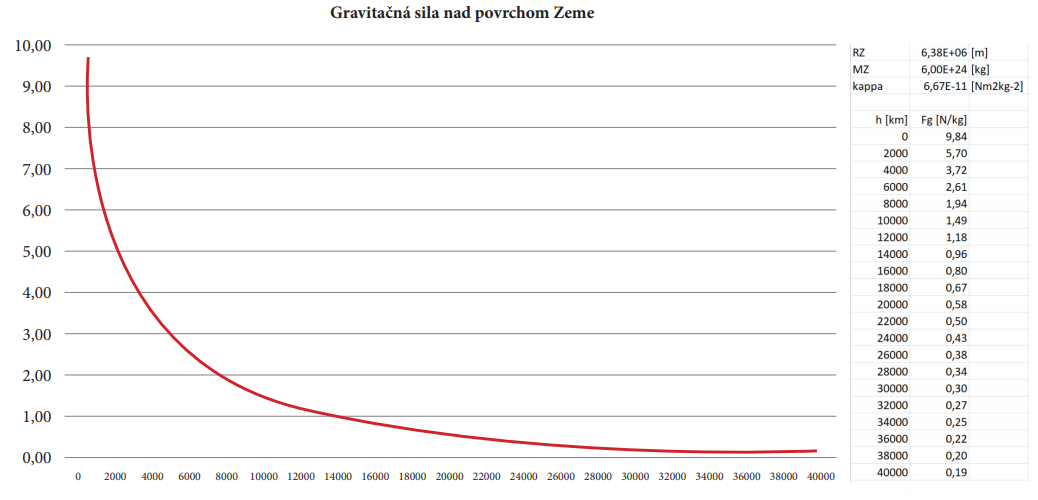Practical exercise 1: GRAVITATIONAL FIELD AROUND THE EARTH
1. Try to verify by calculation whether the gravitational force acts even in the weightlessness. In space, there is an international space station ISS in a state of weightlessness near the Earth, further from the Earth there are geostationary satellites (they are still above the same place on the Earth's surface), even further away is the Moon. At what distance will the attractive gravitational force of the Earth disappear?
2. At a height h above the surface of a spherical object (the Earth) with mass MZ and radius RZ , a gravitational force
acts on the object with mass m).
Calculate and compare the gravitational force acting on the object weighing 1 kg:
- on the surface of the Earth,
- at an altitude of 400 km at which the ISS is operating,
- at an altitude of 35 800 km in which geostationary satellites move,
- at a distance of the Moon, which is 380 thousand km.
3. Next, construct a graph of the dependence of this gravitational force on the distance from the Earth's surface from 0 km to 40,000 km. Use the prepared table with the distances of 2,000 km. (The graph can also be created in MS Excel or similar.) Estimate, according to the graph, how far the gravitational force of the Earth will be zero.
4. The ISS moves in a low orbit 400 km above the Earth's surface. What percentage is there a gravitational force less than on the surface? Why don't astronauts feel the gravitational force on the ISS?
Sketch a picture of the ISS trajectory at a scale of 1: 100,000,000 (the radius of the Earth will be 6.4 cm, the distance of the ISS trajectory from the Earth's surface is 4 mm).
Objective:
The objective of this activity is to show pupils that the gravitational force of the Earth acts at infinite distance. Pupils must realize that the gravitational force does not have to be zero at all for the existence of weightlessness. A typical example is the low orbit and the ISS, where the gravitational force is only 12% less than on the Earth's surface.
Instructions for the Teacher:
• Calculating the gravitational force is not complicated, just pay attention to the conversions of all units of length per meter.
• Pupils should be reminded that the calculated gravitational force acting on the object weighing 1 kg on the Earth's surface is actually the so-called constant g = 10 N/kg, which they know from physics lessons.
• If students are able to create graphs in MS Excel or another spreadsheet, it is advisable to use this application to create a graph. This eliminates boring calculations.
• Already at this moment, it is necessary to lead pupils to think that the gravitational force is compensated by another force in the state of weightlessness - when orbiting the Earth it is a centripetal force.
• The sketch of the ISS trajectory leads to the idea of how close the ISS moves next to the Earth. And yet it has a state of weightlessness. An interesting note on the sketch is a comparison with the height of the highest mountains on this scale (approximately 8 km).

The curve in the graph still approaches the x-axis (asymptotically), but never touches it. Therefore, at no distance from the Earth will the gravitational force be zero. At a certain distance, of course, it will be so small that it will be negligible compared to the action of other closer objects.
At an altitude of 400 km above the Earth's surface, the gravitational force is only 12% less than on the Earth's surface. The astronauts are in a state of weightlessness, because the gravitational force acting on them and the station is compensated by the centripetal force acting on them, as they move around the Earth along an approximately circular trajectory.
The data for the sketch are given in the task. The Earth radius 64 mm, ISS distance from the surface 4 mm (ISS trajectory radius 68 mm).


